US Military sets up missing jet hotline as it asks for public to help it find missing F-35 Lightning II stealth fighter which may have carried on in ‘zombie state’ after pilot ejected over North Charleston
The US military has set up a hotline for a missing Marine Corps F-35 fighter jet, which has been missing since its pilot ejected over South Carolina for unknown reasons, leaving the aircraft with stealth capabilities flying in a “zombie state.”
Joint Base Charleston asked the public Monday to call the base if they have “information that could help our recovery teams locate the F-35,” which is worth $100 million.
The pilot ejected safely and parachuted into a residential neighborhood in North Charleston around 2 p.m. Sunday. He was taken to a local hospital where he was in stable condition, Maj. Melanie Salinas said. The pilot’s name has not been released.
Based on the location and trajectory of the missing aircraft, the search for the F-35 Lightning II jet focused on Lake Moultrie, about 50 miles from North Charleston, said Senior Master Sgt. Heather Stanton at Joint Base Charleston. The pilot engaged the autopilot function before ejecting.
A Marine Corps pilot ejected safely from an F-35 Lightning II jet over North Charleston on Sunday, but his plane remains missing
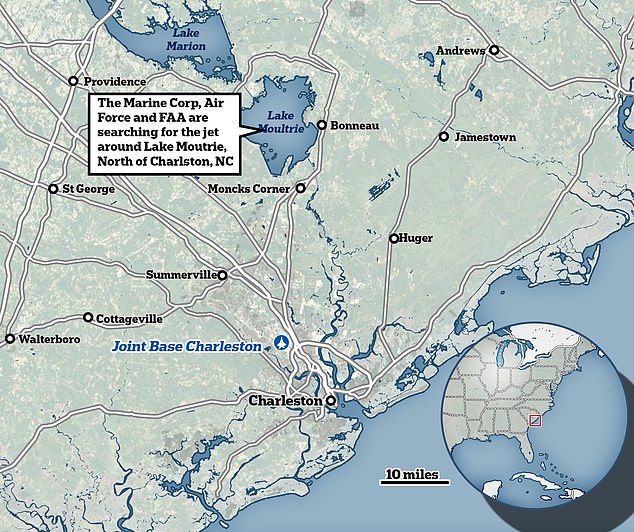
Officials have also said they have no evidence the plane actually crashed.
Man-made Lake Moultrie is 75 feet deep at its deepest and 14 miles wide at its widest.
An F-35 has a range of up to 2,000 kilometers, but it is unclear how much fuel was in the plane when it disappeared. With a full tank it can travel hundreds of kilometers on autopilot.
Many are ridiculing the situation online, with social media users expressing disbelief that the military cannot find such an expensive piece of military equipment.
X, formerly Twitter, is full of memes mocking the military and the Biden administration over the embarrassing incident.
Jeremy Huggins, spokesman for Joint Base Charleston, said the F-35’s transponder is not working for an unknown reason. Huggins said, “That’s why we put out the public request for help.”
The jets are designed to be undetectable.
“The aircraft is stealth, so it has different coatings and different designs that make it more difficult to detect than a normal aircraft,” Huggins said. the Washington Post.
A South Carolina Law Enforcement Division helicopter joined the search for the F-35 after bad weather cleared in the area, Stanton said. Military officials appealed in online messages on Sunday for all the public’s help in locating the plane.
Officials are still investigating why the pilot ejected, authorities said.
The pilot of a second F-35 returned safely to Joint Base Charleston, Salinas said.
Local Congresswoman, Representative Nancy Mace, tweeted: ‘How the hell do you lose an F-35? Why is there no tracking device and we ask the public something: find a plane and return it?’
Lawmakers have recently been critical of the rising production costs of F-35s.
A May 2023 report found that it will cost a total of $1.7 trillion to maintain the F-35 Lightning II Joint Strike Fighter program. Moreover, the program is $183 billion over budget. The aircraft was made by Lockheed Martin.
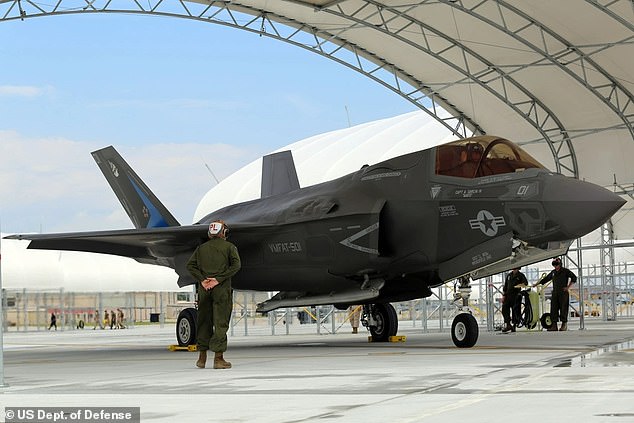
Military officials appealed in online messages on Sunday for all the public’s help in locating the plane
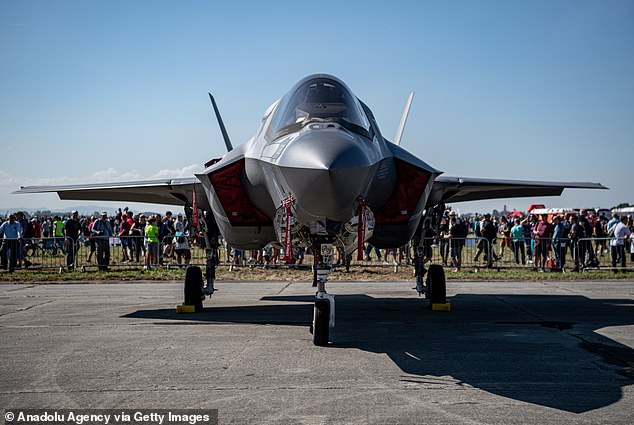
Representative Nancy Mace tweeted, “How the heck do you lose an F-35? Why is there no tracking device and we ask the public what: find a plane and return it?
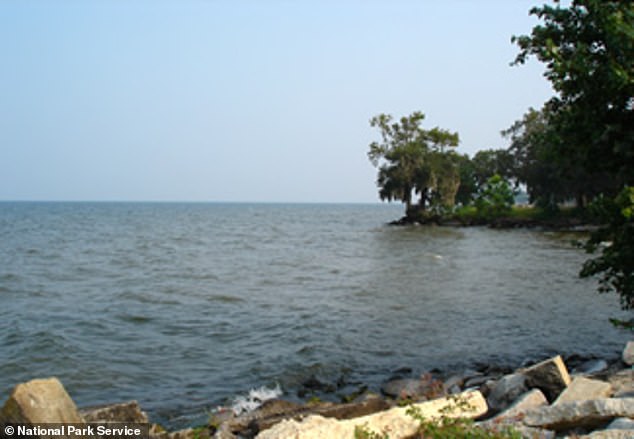
Lake Moultrie in South Carolina, where the search is focused, is about 75 feet at its deepest point
The planes and pilots were with Marine Fighter Attack Training Squadron 501, based in Beaufort, not far from South Carolina’s Atlantic coast.
The Air Force considers accidents that “result in death, injury, illness or property damage” to be an “accident,” the Washington Post reports.
After the very first F-35 crash in 2018, that accident was dubbed a “Class A” accident, meaning more than $2 million in damage was caused.
Last October, an F-35 jet crashed and exploded in flames at the end of a runway in Salt Lake City after the pilot ejected.
After the crash, Hill Air Force Base said it was conducting the “first of its kind F-35 recovery course.”
The training covered how to safely and effectively handle various scenarios, such as a collapsed nose gear, pilot evasion and aircraft hoisting.
“This training is invaluable not only to our U.S. military, but also to our partner nations that operate the F-35,” said Master Sgt. Andrew Wilkow, instructor and one of the course designers, said at the time.
‘Unfortunately, accidents do occur from time to time, making it imperative that staff are properly trained in recovery procedures and how to carry out these tasks safely.’
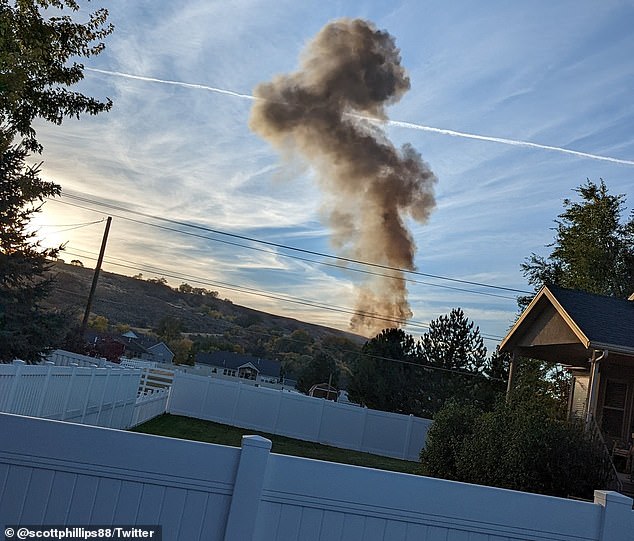
Large plumes of smoke could be seen where the F-35 crashed just outside Salt Lake City in October 2022
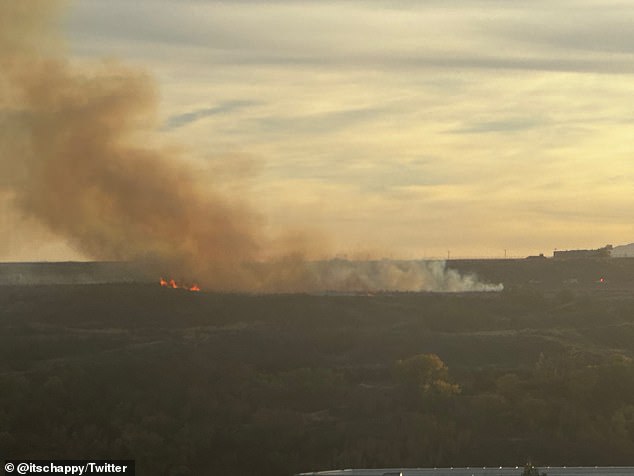
Flames could be seen from the crashed plane in Utah after the F-35 jet crashed in October 2022
The Marine Corps Air Station at Beaufort – where the pilot took off in the most recent incident – is located about 35 miles southwest of Charleston and is home to several units of the 2nd Marine Aircraft Wing, including the Marine Fighter Attack Training Squadron 501 that F flies. -35B Lightning IIs.
Approximately 4,700 military personnel serve with the 6,900 acres utilizing a large air-to-air combat range off the coast of South Carolina and Georgia, along with an air-to-ground combat and bombing range in Georgia’s McIntosh County.
It was home to a highly decorated Marine Corps pilot who died last month when his fighter plane crashed near a base in San Diego during a training flight.
Major Andrew Mettler was piloting an F/A-18D Hornet when it crashed near Naval Air Station Miramar on August 24 just before midnight.
That crash was the fifth Class A aviation accident — totaling more than $2 million in damages or fatalities — in the current fiscal year, and the first involving a Marine Corps aircraft, according to Task & purpose.
This incident is attached to the incident known as the Wheatfield Bomber. In 1970, a pilot flying a Convair F-106 Delta Dart encountered problems that forced him to eject.
The reduction in load caused by the ejection, plus the force, allowed the plane’s nose to dip and it landed safely in a Montana farm field with minor damage. The plane is now on display at the National Museum of the United States Air Force.
